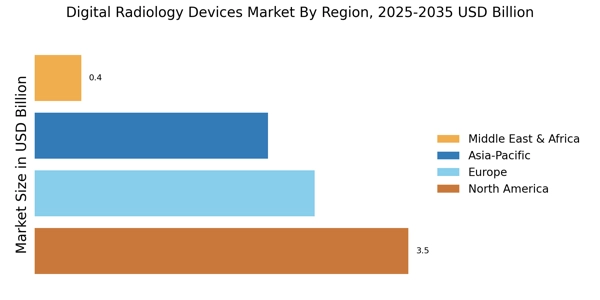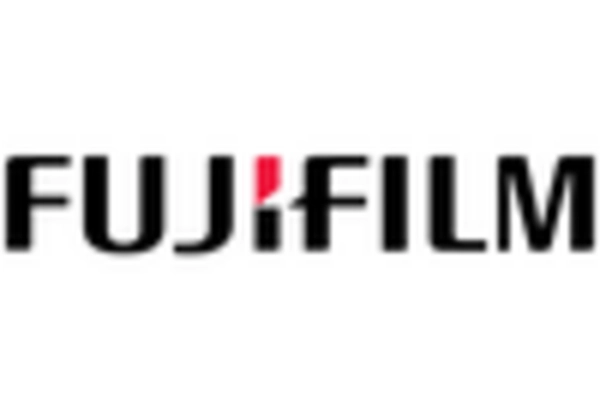Growing Aging Population
The aging population is a significant factor influencing the Digital Radiology Devices Market. As individuals age, they are more susceptible to various health conditions that require diagnostic imaging. The World Health Organization projects that the number of people aged 60 years and older will double by 2050, leading to an increased demand for medical imaging services. This demographic shift necessitates the adoption of advanced digital radiology devices to cater to the healthcare needs of older adults. Consequently, healthcare facilities are likely to invest in state-of-the-art imaging technologies to accommodate this growing patient population, thereby driving market growth.
Increased Healthcare Expenditure
Rising healthcare expenditure across various regions is contributing to the expansion of the Digital Radiology Devices Market. Governments and private sectors are investing more in healthcare infrastructure, which includes the procurement of advanced imaging technologies. This trend is evident in many countries, where healthcare budgets are being allocated to enhance diagnostic capabilities. Market analysis suggests that increased spending on healthcare services correlates with a higher demand for digital radiology devices, as healthcare providers seek to improve patient care and operational efficiency. This financial commitment to healthcare is likely to sustain the growth trajectory of the digital radiology devices market.
Regulatory Support for Innovation
Regulatory bodies are increasingly supporting innovation within the Digital Radiology Devices Market, which is fostering market growth. Streamlined approval processes for new imaging technologies are encouraging manufacturers to develop and introduce advanced devices. This regulatory environment not only enhances competition but also ensures that healthcare providers have access to the latest diagnostic tools. As regulations evolve to accommodate technological advancements, the market is likely to see a surge in the introduction of innovative digital radiology devices. This supportive framework is essential for maintaining the momentum of growth in the digital radiology devices market.
Rising Demand for Early Diagnosis
The increasing emphasis on early diagnosis in the healthcare sector is a key driver for the Digital Radiology Devices Market. As healthcare systems prioritize preventive care, the need for advanced imaging technologies becomes more pronounced. Early detection of diseases such as cancer can significantly improve treatment outcomes, leading to a higher demand for digital radiology devices. Market data indicates that the prevalence of chronic diseases is on the rise, further fueling the need for effective diagnostic tools. This trend is likely to continue, as healthcare providers seek to adopt technologies that facilitate timely and accurate diagnoses, thereby propelling the growth of the digital radiology devices market.
Technological Advancements in Imaging
The Digital Radiology Devices Market is experiencing rapid technological advancements that enhance imaging capabilities. Innovations such as artificial intelligence and machine learning are being integrated into radiology devices, improving diagnostic accuracy and efficiency. For instance, AI algorithms can analyze images faster than human radiologists, potentially reducing the time required for diagnosis. The market for digital radiology devices is projected to grow significantly, with estimates suggesting a compound annual growth rate of over 6% in the coming years. These advancements not only streamline workflows but also enable healthcare providers to deliver better patient outcomes, thereby driving the demand for digital radiology devices.


















Leave a Comment